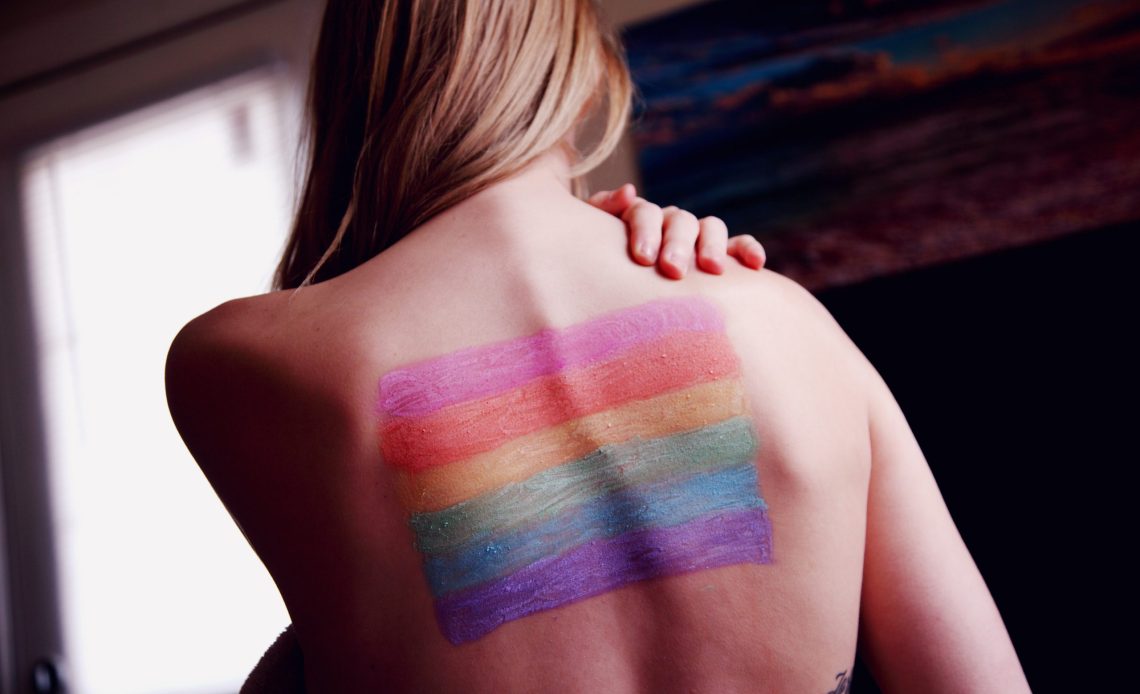
, I talked to you about the first myths and misconceptions about transgender women. So here is the rest of my list.

Photo Kamaji Ogino
These are the most common questions that I have come across, the list is far from exhaustive. So if you want to meet a transgender woman , find out a little about her world to approach her without hurting her. Respect is an essential thing in all relationships. And if you have any doubts, you can always ask me!
Here we go.
6. If our culture didn’t have such strict gender roles , there would be no need for transition
This is another error stemming from the confusion between gender identity and gender expression, and also the belief that a trans woman makes her decision because she doesn’t feel comfortable. comfortable with a male gender role rather than a male body.
The argument goes like this: if we broke the socially arbitrated binary and “gender straitjacket,” we would not feel conflict between ourselves and our assigned gender.
But, again, we don’t transition because we’re uncomfortable with the male role. Transition is the result of discomfort in a male body.
As open, enlightened and non-sexist as our society may be, most women would immediately feel alienated and bothered by having a penis, a pair of testosterone-producing testicles, a hairy face and body with a hairy distribution. masculine muscles and fat, a flat chest, that sour smell of men’s locker rooms, oily skin, etc. And most men would feel directly frightened and dismayed to have a vagina, monthly periods, breasts, smooth skin, no beard, feminine shapes, wide hips, estrogen and progesterone cycle going up and down, etc.
Transsexuality is first and foremost about us, our bodies, and our right to be happy in that body, not about any social conventions or gender politics or what you think society should be or what you think is best for us. People whose gender identity conflicts with their physiological sex will continue to exist, regardless of how we adapt to variations in gender expression. Solving society’s gender problems will not solve all of society’s gender problems.
Please take it as a reasonable assumption that we think about it, that our decisions are our own.
7. You are so brave !
No. It’s a great idea, really, and thank you. It’s an extremely tempting idea, too, and hard to give up. It would be fantastic to believe that this is a wonderfully courageous, fearless and strong woman who overcame unimaginable obstacles to assert herself without engaging in a hostile and intolerable world. But this is not true. She is in pain and afraid, and if she could have avoided all this, she would have done so.
Some of the trans people are brave. Some trans people are strong. But this is not always the case and cannot be inferred from the transition.
8. You appropriate the woman’s body
Appropriation is the co-opting of someone else’s identity. That is not the case here. They express their own identity. It is not about trying to imitate or express themselves as the Other, they are trying to express the Self more accurately and honestly. They are not transitioning to become a new or different person. They become more themselves.

Photo Polina Tankilevitch
9. Why can’t you accept yourself as you are? Why couldn’t you learn to be comfortable with yourself ?
This myth is often based on the analogy with cosmetic surgery and eating disorders.
After all, we teach people to do their best to accept their bodies and not treat themselves with disgust. We correctly teach people that self-acceptance is of great importance to their mental and emotional well-being. The appropriate response to body image issues is therapy and building self-acceptance, not facilitating an obsession with cosmetic surgery or encouraging an eating disorder.
But gender dysphoria isn’t as simple as a “body image issue,” and it has been proven not to respond to therapy and psychotropic medications. There are certain reasonable expectations that a person can have for their body, and there are certain conflicts between the body schema or self-image and the physical configuration of the body that merit treatment through medical means.
If you are cisgender, ask yourself this: If your genitals were missing or disfigured in an accident, would you want to be blamed for wanting prosthetics or cosmetic surgery? Having a body that aligns with one’s internal conception of sex and gender is a perfectly reasonable thing to want and a very difficult thing to live without.
Additionally, these types of procedures and gender transition have defined and specific end points and goals. Eating disorders and cosmetic surgery do not. When a person suffers from a serious psychological body image disorder, they will likely never feel beautiful or thin enough. They will remain unhappy, and physical changes will not solve the underlying problem. In the case of gender transition and cosmetic procedures for burns and deformities, there is an end point and the procedures consistently produce great psychological and emotional benefit with significant improvements in patient well-being.
Most medical procedures are not simply intended to sustain life. They aim to maintain well-being and improve quality of life. This is what transition offers…a quality of life that an individual can reasonably hope for. No other procedure or treatment has ever been shown to be as effective or helpful in treating the extreme damage to mental health caused by gender identity disorder.
10. You don’t really become a woman. The process is only cosmetic . You’re still technically a man
There is no particularly good reason to favor the genetic definition of sex over all other physical aspects of sex: hormones, secondary sexual characteristics, genital configuration, etc. Chromosomes don’t really play as important a role in sex differentiation in humans as we often think. The Y chromosome is pretty much a scrap of broken down DNA whose only real function is to turn gonads into testes. In an XX cell, one of the X chromosomes is deactivated. As such, there is no real functional difference between a “female” cell and a “male” cell. The process of sexual differentiation in humans is not genetic in nature, but hormonal.
As for the question of being “cosmetically” feminine… A trans woman’s secondary sexual characteristics are not substantially different from those of a cis woman and are formed by the same physical processes. If my breasts are to be considered “cosmetic”, the same goes for any woman’s breasts.
There is no single variable that can determine whether someone is “really” a woman or not. Doing this for any individual trait will necessarily require excluding some cis women from the category. There are traits that no transgender woman possesses, but there will always be cis women who don’t possess those traits either. As such, there is no definitive way to suggest that transgender women are outside the “woman” category, but that all cis women would be. At least not without falling into tautologies like “only cis women are real women because trans women are not really women”. To the extent that the term “woman” should be meaningful and consistent, transgender women should be included.

Photo Yaroslav Shuraev
As the subject is still vast, and as you can see, I like to get to the bottom of things, I will keep a few more questions for you in the last part. Don’t blame me, it’s just that I like to capture your attention for as long as possible ( camming fault ?!).
“XLoveCam is not responsible for blog content that is claimed to be written by an external party.”







